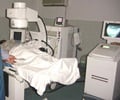Neeri KFT is an Ayurvedic drug that helps strengthen the kidney and clear toxic fluids from the body.

‘Neeri KFT is an Ayurvedic drug that helps strengthen the kidney and clear toxic fluids from the body.
’





Neeri-KFT: The Ayurvedic Poly-Herbal Drug
In a study published in latest issue of Journal of Ayurveda and Integrated Medical Sciences, Assistant Professor Komala A, Siddesh Aradhyamath and researcher Mallinath IT from JSS Ayurveda Medical College and Hospital in Karnataka gave a range of Ayurvedic formulations along with AIMIL Pharmaceutical’s innovation Neeri KFT for impaired kidneys."A dose of 20 ml of this ayurvedic formulation daily --morning and evening -- was given for a month," the researchers said, adding the outcome was positive.
The herbal drug not only helped protecting the kidneys of the patients from further damage due to the condition but also helped excreting the collected fluid from their abdomen.
The consumption of herbal formulation had flushed out fluid from the abdomen through the urinary tract, said the researchers.
The NEERI-KFT, a herbal medicine extracted from plants, is composed of herbs such as Punarnava, Varun, Sigru, Sariva, Makoi and Sirish, also known for their diuretic properties.
Advertisement
What is Ascites?
Ascites is the most common complication of cirrhosis (scarring of the liver). It affects around 60 percent of people with cirrhosis within 10 years of their diagnosis, and the two-year survival rate is 50 percent.Advertisement
Ascites usually occurs when the liver stops working properly or it malfunctions, leading to a build-up of fluid in the space between the abdominal lining and the organs.
Source-IANS















